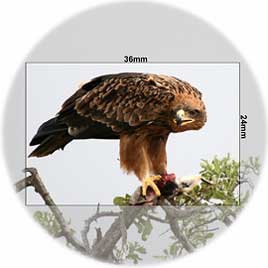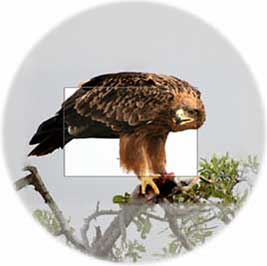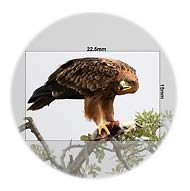Contact Details: Scotch Macaskill, Dirt Road Traders, Currys Post Road, Howick, KwaZulu-Natal, South Africa. Tel: +27 (0)82 578 2329. Privacy: Your privacy is guaranteed. See our Privacy Policy for more. This site accepts advertising and other forms of compensation - see Disclosure and Advertising for details. Site updated: 2022. Copyright © 2002 - 2022 Scotch Macaskill

| ||||||||||
|
||||||||||
| See Also: |
Canon Digital Camera Lenses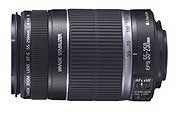
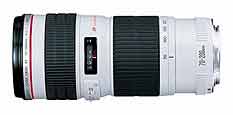 Canon digital camera lenses as discussed here refer to interchangeable lenses that fit Canon's range of
single lens reflex (SLR) digital cameras. Canon compact digital cameras have fixed lenses that cannot
be removed or inter-changed, so cannot be purchased separately.
Canon digital camera lenses as discussed here refer to interchangeable lenses that fit Canon's range of
single lens reflex (SLR) digital cameras. Canon compact digital cameras have fixed lenses that cannot
be removed or inter-changed, so cannot be purchased separately.
At the outset, it's important to understand that all Canon lenses with electronic mounts ("EF" designated lenses), designed for use on its range of 35mm SLR film cameras, can also be used on Canon digital SLR cameras -- from the consumer Digital Rebels (300D - 550D) to the top-end Canon EOS 1Ds cameras. As Canon have discontinued all film cameras except for the Canon EOS 1v, it's reasonable to say that all currently available EF lenses are in fact digital camera lenses, as that's what they're now being used for. Fundamentally, a Canon 35mm SLR camera (EOS 1) and a Canon full-frame SLR digital camera (EOS 1Ds) are the same -- light-tight boxes with a lens, a way of controlling the amount of light entering the camera, and a light sensitive area to record the image that's projected by the lens. In the case of film cameras, a piece of film 36 x 24mm in size captures the image. With full-frame digital cameras, a light sensitive CMOS sensor, also 36 x 24mm in size, captures the image. Films have to be processed in chemicals to bring out the image, while the information collected by the sensor has to be processed by the camera's processor to produce a digital file containing the image. So it's logical that Canon's range of EF lenses that worked on its film cameras will also work on its digital cameras. In the above scenario, we're talking about digital cameras with a full-frame sensor (as in the Canon EOS 1Ds and Canon EOS 5D) that's the same size as a piece of film. However, the large majority of digital SLR cameras produced by Canon do not have a full-frame sensor, i.e. it's smaller than a 36 x 24mm piece of film. This is largely a result of cost. Sensors are expensive to produce, so it made sense for Canon (and Nikon, Pentax, Olympus, Sony) to manufacture digital SLR cameras with smaller sensors to make them more affordable. APS-C SensorsIn the case of Canon, all its entry-level or "consumer" digital SLRs like the Digital Rebels (300D through to 550D), plus its "prosumer" models (10D to 50D) and 7D have a sensor that's 22.5 x 15mm in size - commonly referred to as APS-C size sensors. Although all Canon's EF lenses can be used on cameras with APS-C sensors, the smaller size of the sensor has a major impact on the image produced. Imagine projecting a slide or movie onto a screen so the image fills the screen, then replacing the screen with a smaller one - the projected image will now be too big for the screen and "overflow" it. This can be seen from the two pictures below. The left one shows how a circular image cast by the EF lens is captured on a full-frame sensor, while the right one illustrates what happens when the same lens is used on a camera with an APS-C sensor. The image is too big for the sensor and has effectively been cropped.
To get the full image to fit on the sensor, the photographer either has to move further away from the subject until it can fit in the frame, or change to a shorter focal length lens with less magnifying power. This is clearly an advantage when using telephoto lenses, as you can now fill the frame of your Canon 50D with a shorter tele lens than is required for a 5D. It's like using a 1.6x converter. If the 5D photographer has to use a 320mm lens for the eagle to fill the frame, the 50D user only has to fit a 200mm lens to fill the frame (200 x 1.6 = 320). It's the converse for wide angle lenses -- now your wonderful 24mm lens when placed on the 50D is "lengthened" by 1.6x, so is effectively like using a 38.4mm lens. Not much use when shooting a tight interior or building with no room to move further back. Canon's range of EF wide angle lenses and wide angle zooms suddenly lost their appeal for all but those photographers who could afford full-frame cameras. Canon EF-S Digital SLR LensesTo overcome this, Canon introduced its range of EF-S lenses,
designed specifically for use on its digital SLRs with APS-C sensors, aimed at countering the magnification factor on the wide angle side.
A good example is the Canon EF-S 10-22mm f/3.5-4.5 USM, which equates to a 16-35mm ultra wide on a full-frame body.
Canon is continuing to expand its range of EF-S lenses, which can truly be called Canon digital SLR lenses or Canon digital camera lenses. Because it's a smaller sensor now receiving the image, the circular image cast by the lens can also be smaller -- as in the picture right. This means EF-S lenses can be optimized to use less glass, making them lighter and more compact. For example, Canon's EF-S 55-250mm f/4.5-5.6 IS zoom lens is only 4.3" (108mm) long, yet fills the frame as would an 88-400mm lens on a 5D body. Note that the design of EF-S lenses means they cannot be used on 35mm film cameras or on full-frame digital cameras -- they're specifically for use on Canon digital cameras with the APS-C size sensor. EF Lens and "Sweet Spot" BonusMany camera lenses produce an image that's superior in the center of the frame than around the edges. When using a lens designed for a full-frame sensor on an APS-C sensor, only the central "sweet spot" of the image is used. This means a lens that is unacceptably soft or defective around the edges can give better results on the smaller sensor. See also Canon Crop Factor for more on the effect of using Canon EF lenses with APS-C sensor cameras. Return to Canon Lens Reports |
|||||||||
|
|
||||||||||
